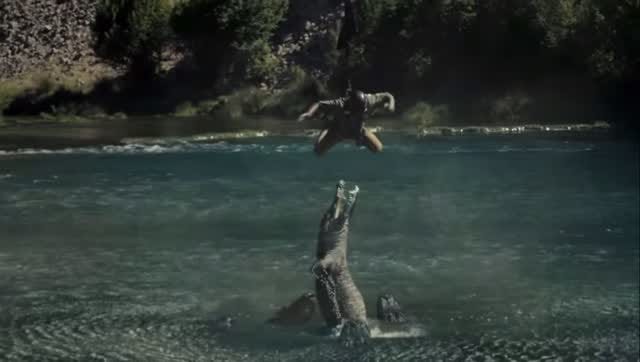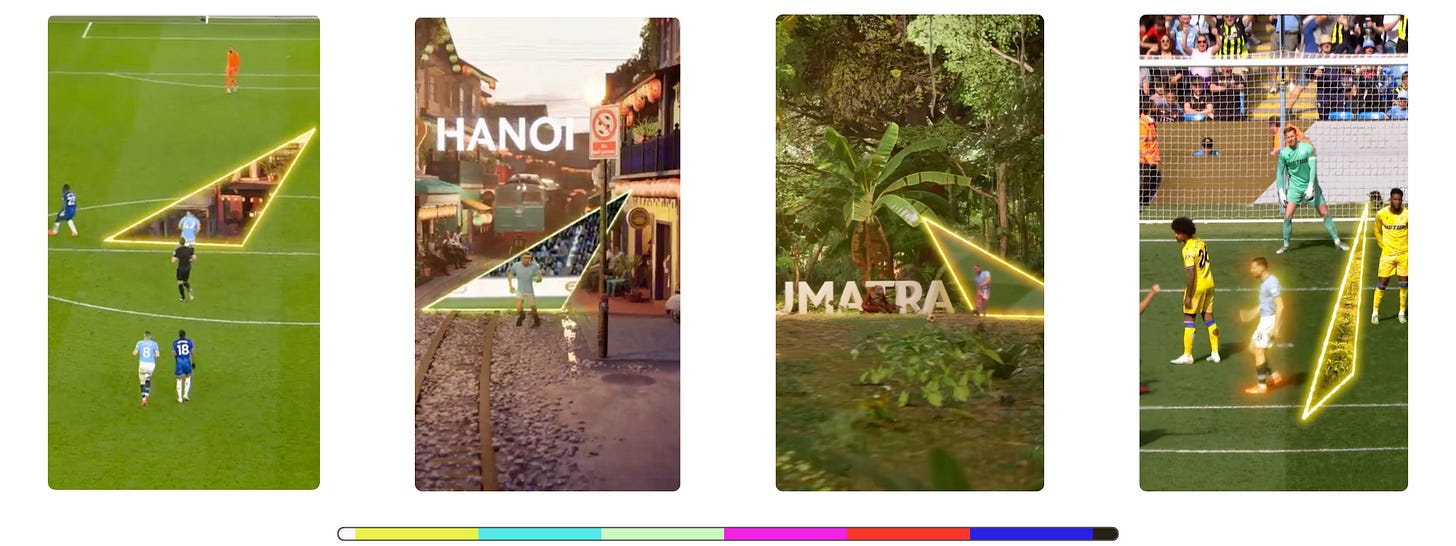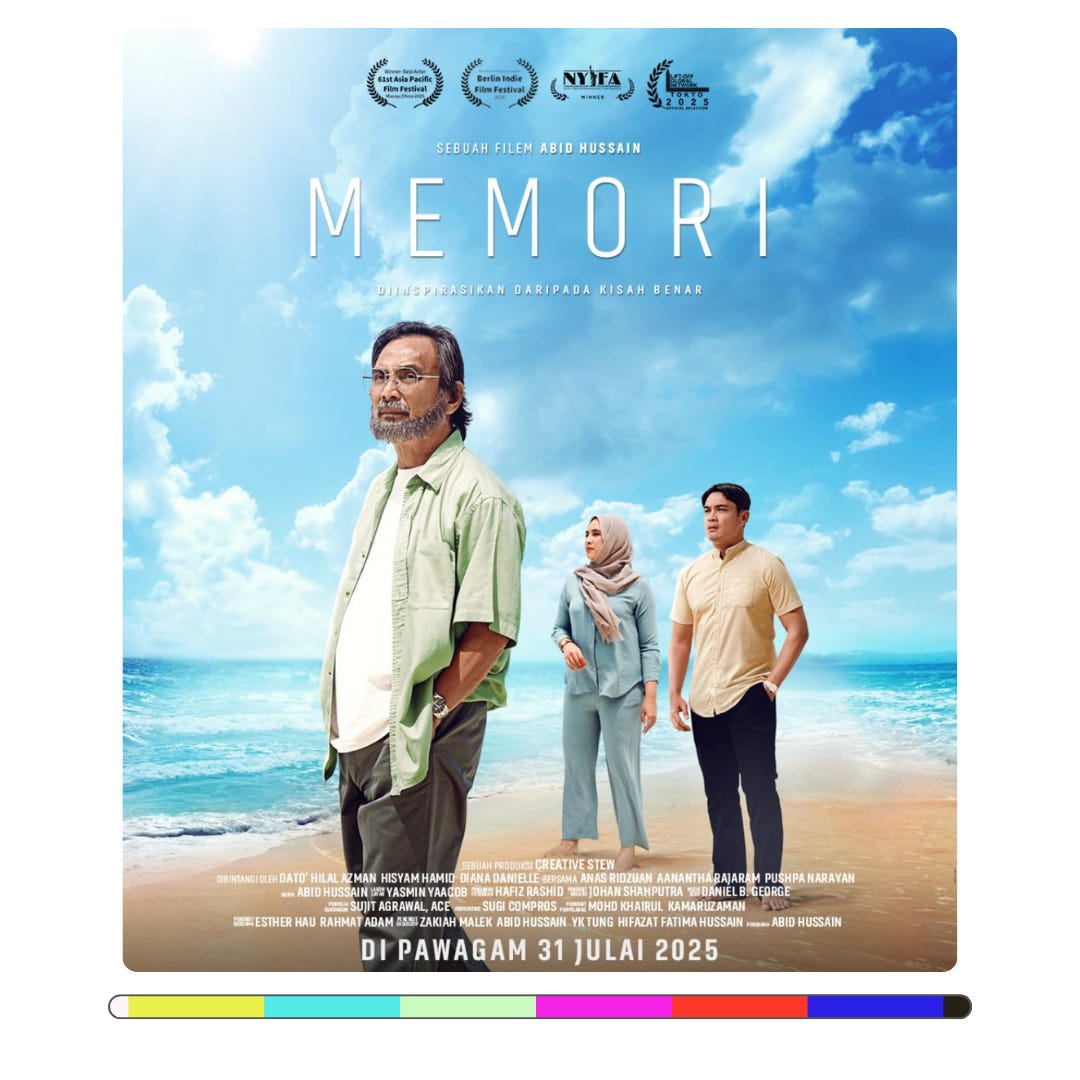The hybrid, the real, the crafted.
· Docu-speak · Symphony of sound · Vubbing · BrandDid ·
Feels like this week is a really delightful mix of craft and creative and tech and brands and storytelling. Plenty for the eyes, ears and the mind!
🎧 Prefer to listen? Hit play above to listen this week’s dispatch- read by me , not Larry the AI voice.
Curated/Cuts: A symphony of sounds from across India, a dissonance of chaotic nature from Columbia!
➕ quick hits you should know, featuring UFC, The Sidemen, Paramount+, Tubi, Roku.
Vubbing: the latest example of a still nascent space- AI transforming language versioning/dubbing. Visual dubs come to an Indian blockbuster.
BrandDid- A look at two fun brand partnerships & executions from Manchester City and Haribo.
Docu Speak: Thoughts around the fascinating space of ‘hybrid documentaries’.
Like hybrid docus, this week sees handshakes between technology, creativity, sponsorships and memories.
🎬 Curated/Cuts.
1. Show us what you got, Nature.
Mother Nature will f**k you up.
This is the single takeaway from Columbia’s new spot. That, and how its gear can take on said maternal figure at her worst.
Columbia- Engineered for Whatever.
Then they went and did a ridiculous stunt, hanging a bloke from a helicopter using not a rope but, erm, pants. Yup. Pants. There’s also alligators.
Dir: Henry Alex Rubin · Smuggler · Adam & Eve DDB/ James Crosby & William Cottam ·
2. Sound Symphony
One spot stood out from the many around India’s Independence Day last week- Sneha Khanwalkar’s symphony of sounds. SBI General Insurance worked with the music director to craft a new rendition of the national anthem using real world sounds, married with plenty of archival footage.
“Every sound you hear in this film is real, recorded across India, from the crackle of old transistor radios to the chime of UPI, from coal train whistles to the beeps of digital payments.”
Of course, Sneha Khanwalkar has done this before, most memorably in MTV’s Soundtrippin, where she fused real sounds across India with traditional and modern beats, a series I loved at the time.
Original Music & Sounds: Sneha Khanwalkar · Director/ Producer: Samar Gupta · DoP/Editor Sanket Desai ·
· The Bombay Film Studio · Voix Digital
➕
Quick hits you should know:
Paramount+ and its new leadership has its first big swing, and it’s massive. A $7.7b deal for seven years of all UFC fights from 2026. Notably, with no PPV content anymore, meaning MMA fans will have a one-price eat all you can package. David Ellison & his newly minted team outbid incumbent ESPN, but surely also Netflix, Amazon and reportedly Youtube.
“We’ve broken the mainstream.” Last year, the announcement that the huge Youtube collective The Sidemen were taking their show ‘Inside’ to Netflix was met with much interest. Max Goldbart now asks ‘Did The Sidemen’s YouTube-To-Netflix Gamble Pay Off?’ ”Whatever the ratings show, being able to operate within its own social creator ecosystem alongside being on an American juggernaut streaming service feels crucial to why the Sidemen and co seem gratified with their gamble.”
Roku releases a commercial-free streaming service, Howdy. Oddly named, but interesting effort to add to its long-standing ad-driven model, offering “over 10,000 hours” of movies & TV for US$3.
Tubi and YouTube syndication. In what is very much a good ‘ol syndication deal, Tubi is getting three seasons of MrBeast’s YouTube series. Its a first for Jimmy Donaldson aka Mr Beast; I expect more to come for Youtube creators with deep, successful libraries. “While Netflix and others are making noise and “taking meetings” about bringing YouTubers into the mix, Tubi actually went out and did something about it,” says TV Rev / Alan Wolk.
MSNBC announced it will rebrand as MS NOW. It will stand for My Source News Opinion World. Erm, ok. In the impending aftermath of its split from NBC and the from the Peacock logo, I get the desire to retain the ‘MS’ for some familiarity (itself a vestige of a long finished partnership with Microsoft), but surely….?
Visual Dubbing
In what is an India-first, and still an early worldwide example, Neural Garage’s ‘Visual Dub’ technology has been used to visually transform and lip sync an entire film from one language to another.
‘War 2’ released on Aug 14; originally shot in Hindi, it has also been distributed & classified as a native Telugu-language film (not a dubbed version).
You might recall ‘Vubbing’ and this example of a Swedish film that released in the US in May. Slightly differently, the actors for ‘Watch The Skies’ recorded their own dubs. The visual tech from Flawless (they call it ‘True Sync’) achieved a similar end product- a film that looks like it has been filmed natively in whatever language you are watching it in.
Expect to see much more of this. India is ripe for such tech, primed to capitalise on an already increasing, overlapping popularity of content across regions.
Clearly though, we still need to find a widely accepted and suitably misspelt catchy name for this, I am not sure ‘Vubbing’ has quite caught on yet!
BrandDid
A couple of fun brand initiatives from recent months.
Man City & Etihad Airways.
This eye-catching, high energy approach from Manchester City brings football and sponsor together quite nicely. It’s a great way to relive the action with a fresh perspective. Tying in with Etihad’s ‘Beyond Borders’ campaign, they ‘transport’ the most memorable bits from the season across Hanoi, Krabi, Sumatra, Abu Dhabi and Hong Kong.
Its a nifty bit of tech and creative execution; I’ll stop short of calling this “the future of sport!”, as some have delightedly shouted, but its pretty cool!
Chomp chomp.
Another fun one, this from Haribo, the German brand which makes gummies that kids across the world stuff into their mouths by the handful (I have witnessed this first hand too many times to count).
Apparently, its not just kids- the Linkin Park gang loves them too. Leading into the summer concert season, Haribo made special edition gummies with the band logo and personalised candy pieces for each band member- think guitars, microphones and more. Yummy?
Docu-speak
The idea of ‘hybrid documentaries’ might be familiar, even if the term is not. While most will struggle to pin down a clear definition, you can think of it as documentary filmmaking that mixes observational with fictional or crafted footage, without clearly identifying or labelling either. For some documentarians, it is simply the way a lot of their work is done, but remains unnamed, not boxed into any classification. I would also separate this from dramatisations or recreations or reenactments, those terms used to describe entire events or stories re-staged to bring to life an aspect of a documentary (often for historical stories).
Reading filmmaker Gabrielle Brady’s take on it was interesting, in the context of her latest feature set in Mongolia. “I only use that word, hybrid, to signify an in-between space,” she says. “It doesn’t tell you how it was made. It just lets you know that it’s not entirely documentary, or that the film-maker may have used some fictional tools, which most documentaries have.”
Of course, most documentaries can be labelled performative, to some degree. The very act of recording, of filming; it inherently alters the situation being recorded. For many who agree with this view, the staging of scenes are acceptable, valid tools, especially if conveying personal or emotional truth.
As it happens, early in the trailer for Brady’s film ‘The Wolves Always Come At Night’, we hear a protagonist say, “I’m not sure if it’s real or not”. The film, shot over five years, tells the story of young Mongolian couple Davaa and Zaya, who are displaced from their livelihoods in the steppes and must move with their children to shanty towns on the outskirts of a city. It is described as using “observational documentary footage along with re-enacted and created scenes co-written with Davaa and Zaya.”
Sample this description of a scene- in one particularly intimate moment, Davaa and Zaya lie in bed and contemplate their future. Davaa begins to cry before Zaya quietly scolds him, “Don’t cry in bed.” As Brady explains, moments like this were created collaboratively with the cast and crew.
The piece makes for an interesting read, maybe more so in these times where truth can’t by any means be taken for granted.
Do you think documentaries should be pure and unvarnished, or is some creative storytelling acceptable in the interest of portraying a deeper truth?
“There are so many hang-ups in the documentary world about this idea of ultimate truth. There’s only subjectivity in documentary. It’s all a construction.”
·
Elsewhere, Ed Sayer laments the slow loss of the art of making factual TV. His is particular to the UK context, but I would argue applicable at least in part across other regions. Pointing to templates and ‘safe’ approaches, he frames this with the larger concern of no pathway for a next generation of documentarians to really pick up observational storytelling skills.
“What used to be a place for raw, reactive storytelling has been templated into safe, respectable, interview-heavy wallpaper. It’s watchable, but not memorable.”
This will ring true for many.
Memori
I often have this sense of warm joy when I see someone bring heartfelt creative efforts to life. A few days ago, I felt it when I was fortunate enough to attend the premiere for Abid Hussain’s Memori.
This is his debut feature, based on some of the experiences with his own father. It is a tender, moving and- maybe most importantly- honest portrayal of what dementia and Alzheimer’s can do to vibrant people, and to their loved ones.
Yet, it is more than that, weaving in perspectives on shared memories, family dynamics, communication and deeply personal relationships.
It was also a lovely reminder how the experience of storytelling in a cinema has a special place, drawing you in ways absolutely not possible on the best home entertainment setup. And, it is not reserved for blockbusters and movies of spectacle.
Disclaimer: I have known Abid for many years- though not as well as I’d have liked- so there is undoubtedly the added layer here of knowing what a wonderful person is behind this story.
“There are so many hang-ups in the documentary world about this idea of ultimate truth. There’s only subjectivity in documentary. It’s all a construction.”










